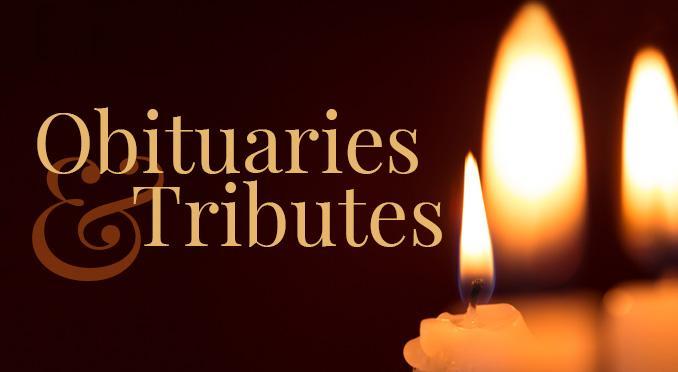

FUNERAL AND Burial Services
Rituals are symbolic activities that help us, together with our families and friends, express our deepest thoughts and feelings about life's most important events. Baptism celebrates the birth of a child and that child's acceptance into the church family. Birthday parties honor the passing of another year in the life of someone we love. Weddings publicly affirm the private love shared by two people. The funeral ritual, too, is a public, traditional and symbolic means of expressing our beliefs, thoughts and feelings about the death of someone loved. Rich in history and rife with symbolism, the funeral ceremony helps us acknowledge the reality of the death, gives testimony to the life of the deceased, encourages the expression of grief in a way consistent with the culture's values, provides support to mourners, allows for the embracing of faith and beliefs about life and death, and offers continuity and hope for the living.
A traditional funeral service generally involves a visitation, followed by a funeral service in a church, funeral home chapel or other place of worship. The casket is typically present at both these events, and is either open or closed. Following the ceremony the body is taken in procession to the cemetery where a graveside committal service is held and the body interred in the grave.(earth burial), or it may be entombed in a crypt inside a mausoleum (above ground burial). Family or religious traditions are often a factor for choosing burial.
Cemetery Types
Church/Community/Family Cemeteries: These cemeteries are generally governed by a committee or trustee. They are non-profit in nature and un-regulated by state agency. The care and up-keep usually depends upon donations. Family cemeteries are on private property and generally controlled by the land owner. M
Memorial Parks/Preputual Care Cemeteries: A memorial park is a for profit company or corporation. They are regulated by the state cemetery commission. A memorial park has by-laws and rules and regulations that govern the policies of the cemetery. A maintenance trust fund is established from a portion of the sale of each grave space to be used in the care and maintenance of the cemetery. The cemetery controls all activities within its grounds including but not limited to the opening and closing of the grave, marker types allowed, flower regulations, vault requirements and days and times services are allowed.
Mausoleum: A mausoleum is an external free-standing building enclosing the interment space or burial chamber of a deceased person or people.
Columbarium: A Columbarium is a mausoleum for cremated remains with the niches large enough to hold a urn.
Burial FAQ
What is Opening and Closing? Opening and closing refers to the digging and backfilling of the grave. Typically, the opening and closing fee include locating the grave and laying out the boundaries, moving equipment and trucks into the cemetery, removing the sod, excavating and filling the interment space, removing the excess dirt from the cemetery, leveling, tamping to reduce setteling, re-grading and replaing the sod.
Can we dig our own grave to avoid the charge for opening and closing?
Yes you may in most situations. The only exception is when the burial is in a memorial park that stipulates any work preformed within the cemetery is to be preformed by the cemetery and the cemetery grounds personnel.
Why is having a place to visit so important?
To remember and to be remembered are natural human needs. A permanent memorial in a cemetery provides a focal point for remembrance and memorializing the deceased. Throughout human history, memorialization of the dead has been a key component of almost every culture. Psychologists say that remembrance practices, from the funeral or memorial service to permanent memorialization, serve an important emotional function for survivors by helping them bring closure and allowing the healing process to begin. Providing a permanent resting place for the deceased is a dignified treatment for a loved one’s mortal remains, which fulfills the natural human desire for memorialization.
What happens when a cemetery runs out of land?
It may suprise you to learn that there is enough developed cemetery space in the United States to bury everyone for the next 250 years at the current birth and death rate.
In a hundred years will this cemetery still be there?
We think of cemetery lands as being in perpetuity. There are cemeteries throughout the world that have been in existence for hundreds of years. In North Carolina, there are very strong laws that protect cemeteries.
How soon after or how long after a death must an individual be buried?
There is no law that states a specific time from for burial. Considerations that will affect timeline include the need to secure all permits and authorizations, notification of family and friends, preparation of cemetery site and religious considerations, scheduling the ceremonies and carring out the wishes of the deceased and family members. Contact your local funeral provider for more details.
Does a body have to be embalmed before it is buried?
No. Embalming is a choice which depends on factors like if there is to be an open casket viewing of the body or if there is to be an extended time between death and internment. Public health laws may require embalming if the person died of some select communicable diseases or if the body is going to be transported out of the country.
What options are available besides ground burial?
Besides ground burial, some cemeteries offer interment in lawn crypts or entombment in mausoleums. In addition, most cemeteries provide choices for those who have selected cremation. These often include placement of cremated remains in a niche of a columbarium or interment in an urn space.
What are burial vaults and grave liners?
These are rigid and enginered outside containers into which the casket is placed. Burial vaults are designed to protect the casket and may be made of a variety or combination of materials including concrete, steel, stainless steel, galvanized steel, copper, bronze, plastic or fiberglass. A burial vault is designed to prevent the entrance of air, water and other gravesite substances as well as to support the weight of the earth that covers the casket and the equipment that crosses over it . A grave liner is a lightweight version of a vault which simply keeps the grave surface from sinking in.
Must I purchase a burial vault?
Most memorial parks and public cemeteries require the use of a burial vault. Some smaller rural community, family or churchyard cemeteries also require a vault be used but not all of them. We will be happy to answer an specific question you may have.


